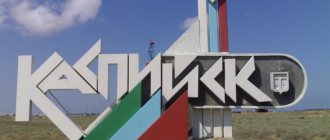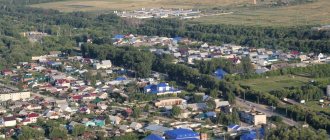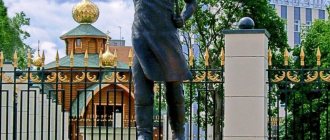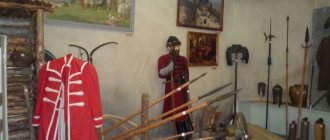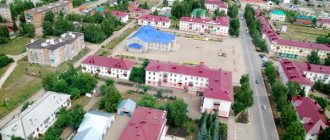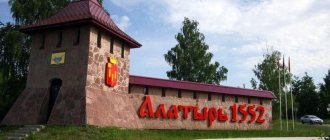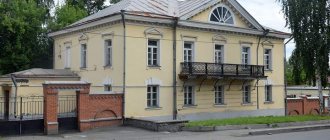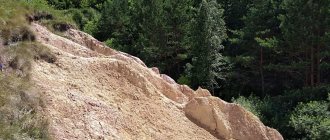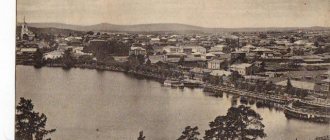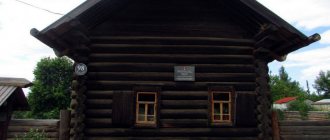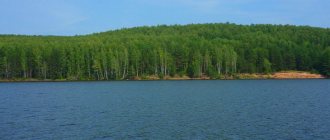How does the city of Vyksa live?
Vyksa is a city with a population of 60 thousand people. A quarter of its area is occupied by the Vyksa Metallurgical Plant (VMZ, part of the United Metallurgical Company), founded in the mid-18th century. It employs every fifth local resident and is the region's second-largest taxpayer. Vyksa pipes are used for the construction of the Power of Siberia, Nord Stream and South Stream gas pipelines. Two-thirds of all passenger and freight trains in the country, high-speed trains on the MCC and the metro move on steel wheels made here. The plant has modern equipment and high salaries, and the city has a developed infrastructure. But the population of Vyksa is still gradually declining, people are leaving to look for a better life. OMK, local authorities and activists are trying to slow down this process and reverse it
“Arrival” is a performance with rafts on one of the Vyksa ponds. Contemporary art is here - on land and water
Festival "Art-Ravine"
In 2011, the urban culture festival “Art-Ovrag” appeared in Vyksa. Once a year, a small provincial town turns into a contemporary art gallery and creative laboratory. As a result, the city has become a meeting place and experimental platform for artists coming from all over the world. Over the nine years of the festival’s existence, more than 85 street art works and art objects have appeared in the city, including a light installation by Timofey Radi, works by the “Russian Banksy” Pasha 183, artists EVOL (Germany), Philippe Bodeloc (France) and many others . The unofficial calling card of art Vyksa was the three-meter unicorn of the artist from Hungary Gabor Miklos Szoke in the city park.
A three-meter unicorn by the artist from Hungary Gabor Miklos Szoke in a city park
To make the festival “theirs” for the townspeople, the organizers are preparing it together with the residents of Vyksa. “Experience shows that only involvement helps small town residents begin to think creatively, develop an initiative, and implement it together. This makes life in a small town more interesting and comfortable, and helps city residents see their future more meaningfully,” says Marina Mikhailenko, head of the OMK-Uchastie charitable foundation. This foundation is the initiator of both the festival and most of the changes in the public life of the city.
Factory
The creation and development of the festival requires a lot of money. “Art-Ovrag” is financed by OMK, the United Metallurgical Company, which includes the Vyksa Metallurgical Plant (VMZ). By the way, this is not the only cultural project of the plant. Last year, OMK supported the fashionable idea of industrial tourism, and now excursions are held at VSW for everyone. Tourists are taken along three routes: they show the birth of steel, the production of giant pipes and railway wheels.
Wheel production and warehouse, VSW plant
The process of making wheels is reminiscent of baking buns: steel “sausage” blanks weighing 8 tons are sawn into pieces, the resulting cylinders are sent to the oven, and then a string of presses gives them the desired shape - it looks very impressive. The red-hot bright orange wheels are cooled, heated again, hardened, ground, and checked for defects.
Performance “The Martin Passion”
Just a year ago, the most popular object among tourists at VSW was the last large open-hearth workshop in Russia. The closure of the obsolete production was turned into a real performance: the winners of the Golden Mask, choreographer Anna Abalikhina and composer Alexey Sysoev, as well as production designer Ksenia Peretrukhina staged the play “Passion of the Open Hearth” right in the workshop. Vocal parts were performed by students of the Vyksa music school. The great-granddaughter of Pierre Martin, the same metallurgical engineer who in the 18th century created a special steel-smelting furnace that received his name, came from France to the pre-show of the performance, which took place on the day of the last steel melting in the workshop. The performance was included in the shortlist of the state award in the field of contemporary art “Innovation” in the category “Project of the Year”, and in April received the Grand Prix of the International Prize in Contemporary Art named after Sergei Kuryokhin.
Painting “Evolution-2” by artist Misha Most, VSW plant
On the territory of the plant there is a unique object of modern art: the wall of one of the workshops is covered with the largest wall drawing in Europe, a mural, made by a single author. The “Evolution-2” mural by a group of street artists led by Misha Most occupies 10,800 square meters: six scenes from factory life are depicted on the wall.
This summer they plan to open an industrial street art park in Vyksa - the country's first collection of works by leading Russian artists, which will be located on the territory of an existing metallurgical production facility.
Historical context
The city of Vyksa arose from several settlements, which from the middle of the 18th century were inhabited by workers of metallurgical plants built by the brothers Ivan and Andrei Batashev, who came from the artisans of the Tula weapons settlement. The historical center of Vyksa is a complex of architectural monuments - the buildings and park of the former Batashev estate, created in the last quarter of the 18th century. At the beginning of the 19th century, the plant and estate were owned by the hero of the Patriotic War, General Shepelev. During the same period, the Vyksa theater was considered one of the three best serf theaters in the empire, along with Riga and Odessa.
The square in front of the former house of the plant founders, the Batashev brothers, during the festival
Today, the main buildings of the Batashev-Shepelev estate, recreated at the expense of the plant, are occupied by the VSW History Museum. The concept of the museum is based on combining classical and modern exhibition space. All exhibitions - there are about 30 of them - are made using interior elements that correspond to different historical periods; each room represents a specific historical era.
The Vyksa Museum is fully adapted for visits by people with disabilities. Tours have been developed here in Russian sign language, accessible to deaf and hard of hearing visitors, and tactile models of some museum exhibits have been created for blind people. Similar inclusive practices are already partially used in industrial tourism at the plant.
For local residents, the estate house is more than just a museum: they get married here, celebrate the New Year and graduations.
Shukhov Tower
It is said that this water tower, a 40-meter-high steel mesh structure consisting of rods connected to each other, is the last of the Shukhov Towers. It is very reminiscent of one of the architect’s main projects - the tower of the radio and television center on Shabolovka in Moscow. Another industrial facility created according to the design of the famous Russian architect and engineer Vladimir Shukhov, the building of a sheet-rolling shop built in 1898, for the roof of which, for the first time in history, a convex sail-shaped mesh covering-shell of double curvature was created.
The Shukhov Tower was once part of the production of the Vyksa plant
The Shukhov buildings are included in the list of cultural heritage sites of federal significance and are of interest not only to tourists, but also to specialists in the field of architectural history. They are located on the territory of the plant with a permit system, and it is impossible to just see them - you need to plan an excursion to VSW in advance and order a pass. But at the moment, VSW is preparing Shukhov’s facilities to open access to them to everyone.
Vyksa Air
At the end of April 2022, an art residence opened in the city - an almost unique event for a provincial city in Russia.
For the first year, people were attracted to the still unknown Vyksa Air residence by industrial tourism and beautiful scenery. Many residents, impressed by the plant, associate their work with metallurgy. For example, Ilya Gaponov painted portraits of factory workers. Usually the artist donates one work to the residence’s collection, but here the organizers bought the entire series.
The residence is open all year round, artists live here from three weeks to two months, give lectures, conduct master classes for citizens and organize exhibitions. In 2022, the residency received 77 applications from artists from 15 countries, this year - 130 from 19 countries. Ten people are selected from all those interested and residents are assigned for the whole year. In May, the artist Yuri Shust lived here, and now there is a team of artists who are making a project for the summer festival.
It was more difficult with visitors. Local residents found it difficult to understand the work of contemporary artists, and few people came to the first exhibitions. But gradually the situation changed. Now there are enough visitors to the residence: teenagers, students and the creative intelligentsia are interested in contemporary art.
Art courtyard on Pirogov
Art yard on the street Pirogov
Last year, the Moscow architectural bureau Druzhba, together with the townspeople, designed and equipped a new courtyard area on Pirogov Street. A multifunctional children's playground with a small stage appeared here. Residents here either organize festivals of yard games and soap bubbles, or home-baking competitions. And on ordinary days the site is not empty.
Immediately after the opening, the yard was occupied by teenagers who, out of habit, began littering and slowly breaking everything. Its residents came to the defense of the yard: they talked to the teenagers and reminded them of the recordings from cameras and the police. This worked: now local youth themselves keep order and chase away vandals.
There are now about a dozen similar courtyards in the small town.
Youth Information Center
The rapid development of culture in the city is a consequence, among other things, of the dialogue between the city administration and local activists. Forty-year-old Andrei Gorelov, having won a social grant, created the “Youth Information Center”, where he teaches journalism to teenagers.
Gorelov himself writes and films for the Virtual Vyksa portal. According to him, the foundation for Art-Ravine was the jam sessions that took place on the stage of the central park in the late 90s and early 2000s.
See what the cultural life of the city looks like today in a video made by novice journalists.
Art space "Ex Libris"
Ex Libris
Six months ago, a two-level art space Ex Libris appeared in Vyksa: the factory library was moved to the city center, giving everyone access to 70 thousand books. Master classes, workshops, psychological trainings and lectures are held here. Admission to all events is free, and the lecturers themselves work for free.
Maria Rykova works in the library. She came to Vyksa following her husband, who was invited to work at the plant. A former economist, Maria now works at the VSW History Museum, is involved in the development of the Ex Libris art space, and says that she does not regret the move. It seems that efforts to create a comfortable urban environment are bearing fruit.
Cafe "Simply Tasty"
Chef and head of the Simply Vkusno cafe chain Marina Vanyukova and Galina Belyaeva were the first and, it seems, the only ones so far to bring molecular cuisine to Vyksa. Marina Vanyukova studied in St. Petersburg and supervised the culinary program of the Art-Ovrag festival several times, treating festival participants to molecular borscht and porcini mushroom ice cream. After “Simply Tasty” participated in the festival, guests even from neighboring cities began to come to the cafe.
Master class on molecular gastronomy
Last year, Vyksa won the All-Russian competition for the best projects for creating a comfortable urban environment “Small Towns and Historical Settlements” of the Ministry of Construction and with these funds has already begun the reconstruction of the embankment and part of the park. A year earlier, Vyksa entered the top ten best small cities in Russia. All this is just a small visible part of the changes that have been taking place in the city in recent years.
From June 14 to 16, 2022, the city will host the ninth Art-Ravine festival, which means new faces will appear, new art objects will be created and interesting projects will be invented.
Photos courtesy of the Art-Ovrag festival and OMK.
Vyksa temples and monasteries
There are also historical places of a religious nature in Vyksa and its surroundings - temples and cathedrals, churches, monasteries and monasteries. We will describe the most famous ones below.
Iversky Monastery
The current Orthodox women's monastery in Vyksa is experiencing a “new stage” in its history, having been revived after being forgotten during the Soviet era. Since 1991, the monastic objects have been revived.
The appearance of the monastery in Vyksa is associated with the name of St. Barnabas of Gethsemane, a novice of the monastery of the same name of the Trinity-Sergius Lavra. In the world his name was Vasily Merkulov. The religious figure, canonized, arrived in the village of Vyksa in 1864, founding a monastery here. The dawn of the monastery came at the turn of the 19th-20th centuries, approximately 1887-1921. Afterwards, the monastery underwent partial closure, and then liquidation. In the 1930s, many of its buildings were destroyed.
The proximity of the two eras is illustrated by the current temple, the Church of the Life-Giving Trinity. The newly rebuilt attractive church, decorated in turquoise and white tones, adjoins the ruins of a destroyed historical building on the west, originally erected in 1904 according to the design of the architect P. Vinogradov.
Church of St. John the Evangelist
The temple, illuminated in 1799, is also the brainchild of Ivan Batashev. In the middle of the 19th century, the Church of St. John the Evangelist underwent reconstruction, it was expanded, and a refectory was added. The church acquired a more solemn appearance and began to resemble a ship in appearance. Religious services were interrupted in 1936, the temple was closed. In 1994, restoration began, which lasted until 2006, when the church again began to receive parishioners.
Temple of Barnabas of Gethsemane
The Varnavinskaya Church is a product of the post-Soviet era; it decorated Vyksa Cathedral Square at the end of the 20th century, in 1999. Built according to the well-known principle of “octagon on quadrangle”, the brick temple covered with white plaster became a kind of tribute to the religious history of the area - it was dedicated to the founder of the local monastery.

